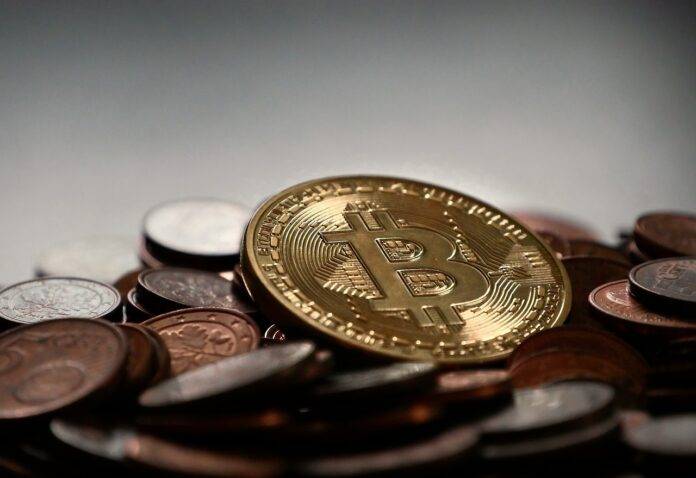Last week’s settlement by Binance and its now-former CEO Changpeng Zhao (CZ) and the SEC is representative of a larger shift taking place in the crypto ecosystem that is seeing the stature of regulated entities rise in prominence, according to JPMorgan analyst Nikolaos Panigirtzoglou.
“The Binance settlement is reinforcing an ongoing shift towards regulated crypto entities and instruments which has been the objective of US authorities post FTX collapse,” Panigirtzoglou said in a note published on Linkedin. “Such a shift towards regulated crypto entities and instruments should be positive for the crypto ecosystem as more regulation will help attract the interest of traditional market participants and investors.”
He said the entry of large traditional asset managers such as BlackRock and Fidelity into the spot Bitcoin (BTC) exchange-traded fund (ETF) race supports this thesis, and clients are now wondering what level of funds could “exit the Grayscale Bitcoin Trust (GBTC) as the biggest bitcoin fund gets converted to an ETF.”
“The argument being that a significant amount of GBTC shares has been bought in the secondary market this year at deep discounts to NAV in anticipation of its conversion to ETF and these speculative investors would take profit once GBTC gets converted to an ETF and the discount to NAV gets arbitraged away,” he said.
Panigirtzoglou estimates that “around $2.7bn could come out of GBTC.”
“In terms of market impact, if this $2.7bn exits completely the Bitcoin space then such an outflow would of course put severe downward pressure on Bitcoin prices,” he said. “If instead most of this $2.7bn shifts into other Bitcoin instruments such as the newly created spot Bitcoin ETFs post SEC approval, which is our best guess, then any negative market impact would be more modest.”
Even if the price impact is modest, Panigirtzoglou said, “The balance of risks for Bitcoin prices is skewed to the downside in our opinion as some of this $2.7bn is likely to completely exit the Bitcoin space.”
“Significantly more money than the above $2.7bn could exit GBTC if its fee (currently at 200bp) is not lowered sharply post ETF conversion towards our estimated range of the equilibrium fee of around 50-80bp,” he warned.
While Panigirtzoglou is warning about a potential price pullback in the near future, Standard Chartered analyst Geoff Kendrick sees the potential for Bitcoin to hit a price of $120,000 by the end of 2024 as miners reduce their selling activity ahead of the halving.
Kendrick previously predicted that Bitcoin could reach $100,000 next year, but said he now considers this estimate to be conservative when taking miner profitability into account.
“We are reiterating our BTC year-end price target of around $100,000, with the potential for an increase due to decreasing miner sales,” he said in a note. He also sees the possibility of BTC spiking to $50,000 in Q1 2024, an increase of 36% from its current price.
His bullish outlook revolves around mining profitability and an assumption that miners will sell fewer tokens to maintain the same amount of cash flow as Bitcoin’s price rises.
“If the BTC price reaches $50,000 in the first quarter of 2024, as we predict, the ‘BTC less all cash costs’ calculation will rise to $30,000,” he said. “Essentially, selling only 27% of the BTC mined in the first quarter of 2024 will generate the same absolute level of excess cash as selling 100% in the second quarter of 2023.”
This would effectively reduce the net supply of Bitcoin by approximately 250,000 BTC, he said, while the halving could also positively affect its price as it will reduce BTC’s annual inflation rate from 1.7% to 0.4%.
The Bitcoin network difficulty level and hash rate have continued to hit new record highs in the run-up to the next halving as miners look to maximize their profits and get maximum use out of older machines. Many of these machines will need to be shut down following the halving due to the decrease in profitability as the BTC emission rate is cut in half.
It’s typical to see a decline in difficulty and hash power following a halving as a result, and the stats do not start to recover until a rise in BTC price makes it feasible for miners to start turning less profitable machines back on.
Bitcoin has historically seen a significant price increase in the year following a halving as the market adapts to the decrease in new supply at the same time as overall adoption and demand rise. It is this repeating trend that has analysts predicting a major bull market cycle for the crypto industry over the next year and a half.
“The halving isn’t priced in, even remotely,” said Cubic Analytics founder Caleb Franzen. “Otherwise, the Bitcoin miners WOULD be participating in this market environment. Almost all of them are down -50% or more from their YTD highs.”
Franzen said if the halving was priced into the current price of BTC, “the miners, by definition, wouldn’t be struggling. In order for the miners to be considered as sustainable as they currently are pre-halving, BTC will at least need to double.”
He noted that doubling from the current level would equate to a BTC price of $74,000, which is “above the prior cycle high.”
“Investors, on the aggregate, don’t see this as a possibility over the next 6 months, which is why the miners aren’t participating,” he said. “The market knows that the halving is coming, but investors aren’t prepared for” the increase that is coming.
Franzen concluded by saying, “Investors know that the halving is coming, but there is disbelief in the ability of BTC to rally going into the halving and post-halving.”
Link: https://www.kitco.com/news/2023-11-27/Bitcoin-is-poised-for-explosive-growth-as-investors-underestimate-emerging-catalysts-analysts.html?utm_source=pocket_saves
Source: https://www.kitco.com


















